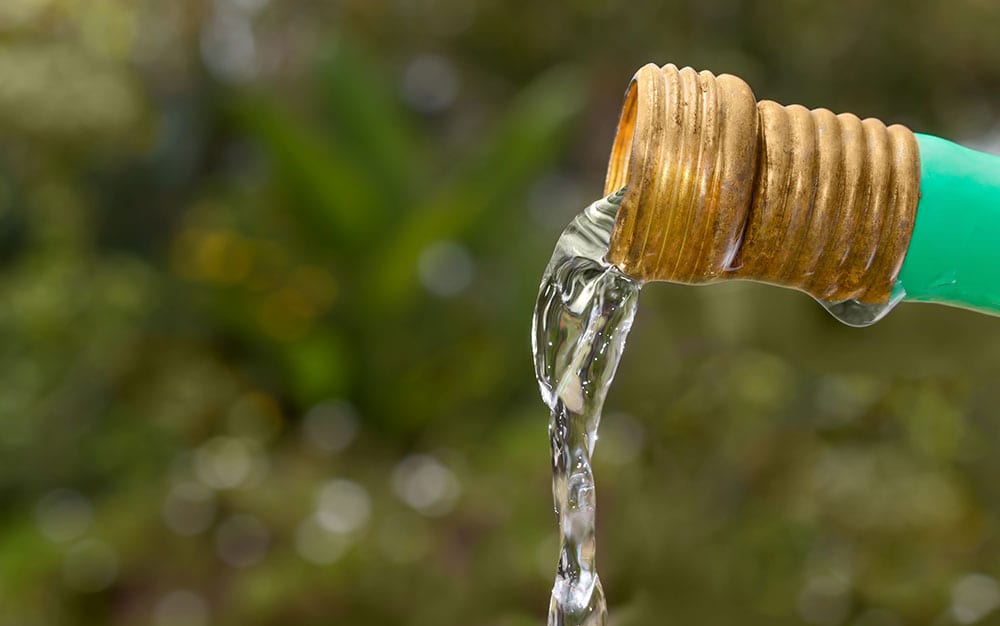Did you know that only 1% of all the water resources on earth are available for human use?

The rest of the planet’s water supply is either saltwater or frozen in ice caps and glaciers. conserving water
With many people across the world struggling for access to safe, clean drinking water, it’s more important than ever that we take measures to conserve water.
A great place to start is harvesting and conserving water in your garden.
Here in the UK, we’re lucky enough (some might disagree!) to have plentiful and regular rainfall which supplies us with fresh water.
Often these showers can be depended on to regularly water our plants and keep them green and healthy.
However during dry spells, it becomes necessary to water our plants and lawn.
There are many ways to avoid having to use water from the tap, and reduce the amount of water that gets wasted in the garden.
Here are a few hints and tricks that I use in my garden to keep conserving water all year round:

Collect rainwater
Harvesting and storing rainwater is a great way to start conserving water in your garden.

You can collect rainwater using a water butt.
This is a storage barrel usually made from plastic, which connects to one of your drainpipes, storing water when it rains.
You can then use the tap at the bottom to fill up your watering can during periods of dry weather.
Using rainwater to water your plants helps to save water as well as benefiting certain plants.
Ericaceous plants such as heather cannot tolerate the lime often found in our running water from the tap, so rainwater is an ideal option.
Natural rainwater is always the best source of water for plants.
Water butts come in loads of different shapes and sizes. There are even some fantastic options that have plant containers on the top, so your water butt can help you save without ruining the look of your lovely garden.
Lime tolerant plants can also be watered using recycled household water – such as water used for boiling vegetables and washing up.
Water with care
You’d be amazed how much water gets wasted when people water their lawns and plants.
The first thing to do to avoid wasting water is make sure you are only watering when absolutely necessary.
Test your grass by stepping firmly on it. If it springs back up, your lawn doesn’t need watering, so you can hold off watering for a few days.
Leaving your grass slightly longer when you mow can also help with water retention.

Ensure when using sprinklers or hoses that they are aimed where they need to be. This is so none of the water is landing on the patio and draining away. The time of day you water your plants can help you save water too.
Never water during the hottest part of the day. Instead, choose an early morning or evening when there is little wind. If you water during hot weather, the moisture evaporates out from the soil before the plants have had a chance to use it. Windy conditions mean the wind can blow water from sprinklers off course.
When you are watering, make sure you soak the soil properly. Otherwise it will simply run off the top of the ground and won’t penetrate plant and grass roots properly.

Avoid thirsty plants

You can even save water by choosing certain plants and lawn types.
If you are new to gardening, or starting afresh in a new garden, then you can also aim to choose drought-resistant plants.
For example, lavender will need less frequent watering. Your local garden centre will be happy to advise you about these, or you can look online.
If you have sandy, dry soil and laying or sowing a new lawn this year, choose drought tolerant grass mixes.
These can withstand longer dry spells without turning brown.
Lock in moisture
Keeping water from evaporating quickly from the soil will mean your plants need less frequent watering.
Using a protective mulch over your beds and borders is a fantastic way to retain moisture. It’ll also improve the quality of your soil. Biodegradable mulches such as organic compost and bark chips can be spread thickly over bare soil to reduce water evaporation, insulate over winter and even help to suppress weeds.


Non-biodegradable mulches such as slate chips have the same effect. They can help to add a very finished look to your garden. Although, they won’t change the quality of the soil.
Using a drip irrigation system or a porous hose reduces excess water evaporation, as it supplies water straight to plant roots, so these are the best kinds to buy if you are thinking of investing in one.
So just a few small changes here and there, and you could be saving gallons of water, which is not only great for the environment, but it will also be great for your bank balance too!

Leave A Comment